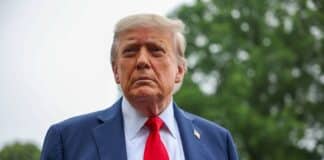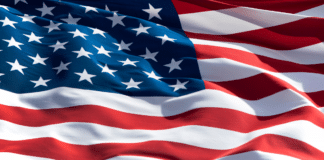In a town not known for keeping secrets, it’s been four full months since the unprecedented leak of the Supreme Court‘s draft opinion overturning national abortion rights and the subsequent probe announced by Chief Justice John G. Roberts Jr. to identify the perpetrator — with no public sign of progress in the manhunt.
Former law clerks at the high court from both sides of the aisle were uniformly stunned when Justice Samuel L. Alito Jr.’s draft dropped online, but they differ broadly on whether the court should identify the culprit and if the leaker needs to be punished to counter future disclosures of controversial cases.
And despite the magnitude of the breach of high court etiquette and procedure, some think the mystery may never be cracked — or at least revealed to outsiders.
“If they haven’t identified the person by now, they aren’t going to make it public,” said Carolyn Shapiro, a professor at Chicago-Kent College of Law and a former clerk for the recently retired Justice Stephen G. Breyer. “I don’t think the public will find out.”
Ms. Shapiro described the leak in the landmark Dobbs decision as “such a high-profile case,” reasoning she doesn’t foresee this type of event happening again.
“This case was extraordinary in numerous ways,” she said. “Since we don’t know who did it, we don’t know their motivation.”
But Mike Davis, president of the Article III Project and a former law clerk to Justice Neil M. Gorsuch, warns that if there’s no accountability, another leak could happen in the future.
And while the motivation of the leaker — to lock in an anti-abortion ruling or to energize supporters of abortion rights before the formal ruling came down — may be unclear, the cast of potential suspects is not large.
“The universe of people who had access to the draft Dobbs decision along with the internal deliberation of the justices is limited to nine Supreme Courtjustices, each of their four law clerks and very few others. This should not be hard to figure out,” he said.
“The court must get to the bottom of this and it owes the public an explanation as to why it has not,” he added.
Chief Justice Roberts tapped Supreme Court Marshal Gail Curley days after the leak to lead the investigation and find out who did the leaking.
A former Army lawyer and colonel who oversees the court grounds and security, Ms. Curley has been in the job less than a year. But observers say she appears to have the right temperament for the unexpected task, and an Associated Press profile described her as “smart, private, apolitical and unlikely to be intimidated.”
Breaking the law?
Even aside from the question of whodunit speculation, legal scholars are still debating whether the leak itself constitutes an actual crime.
Some have said it could be theft of government property or obstruction of justice if the leaker was trying to affect the outcome of the case. Others, meanwhile, have said Supreme Court documents aren’t protected by the confidentiality laws that cover other areas of government.
Still, it is hard to underestimate the shock the leak had on a court and a culture that still shuns much of the modern media culture and demands for transparency. Court watchers were aghast when news broke May 2 that the Supreme Court was poised to overturn the decades-old precedent on abortion. It was the first time a full draft opinion had been leaked in the Supreme Court’s 233-year history.
In the draft opinion published by Politico, Justice Alito said the question of access to abortion should return to the state legislatures. The news broke months before the court would issue its actual 6-3 ruling.
“The Constitution makes no reference to abortion,” he wrote. “Roe was egregiously wrong from the start.”
“It’s time to heed the Constitution and return the issue of abortion to the people’s elected representatives,” read the draft opinion, which was dated in February.
Pro-choice protesters were outraged by the leak, and began protesting outside the homes of conservative justices, sharing their addresses online.
One activist even traveled from California to Justice Brett M. Kavanaugh’s home in Chevy Chase, Maryland with plans to assassinate him.
And the leak did not count as disinformation: Justice Alito’s official opinion ultimately closely mirrored the leaked draft opinion.
A spokesperson from the high court did not respond to a request for comment about the probe or if the court implemented any new rules and procedures to prevent this type of situation from happening in its upcoming term.
Both Ms. Shapiro and Mr. Davis clerked at the high court years before this past term when the historic leak took place. But they see the fall out from the leak quite differently.
“I don’t think it damaged the integrity [of the court],” said Ms. Shapiro.
Bu Mr. Davis said letting the case remain unsolved would create a troubled precedent
“By not having consequences for this leak, the court makes itself a political target for every controversial decision going forward,” said Mr. Davis.
Reporting by The Washington Times.






